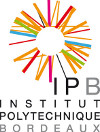 |
 |
|
Intitulé:
High quality pathway construction from the literature and protein-protein interaction networks using latent semantic indexing
du groupe BioInformatique et Visualisation
|
| Date | 2011-11-10 11:00-12:30 |
| Titre | High quality pathway construction from the literature and protein-protein interaction networks using latent semantic indexing |
| Résumé | Background: Many key cellular processes, like cell proliferation or differentiation, involve responses to changes in the cell micro-environment mediated by signals from the cell surface to the nucleus. Such signals are transmitted by sequential protein interactions, represented as an interaction network. These networks are decomposed into signaling pathways, representing a consensus, expert, description of the function of a set of interactions. Interactions in these curated pathways are described in published articles. However, defining and identifying signaling pathways from experimental data is difficult, due to the large number of potential interactions between proteins and due to the large number of published studies that need to be surveyed, in order find support for interactions detected in the data. For that reason, reliable (semi-) automated pathway reconstructions from literature evi- dence are indispensable.
Method: We propose a novel approach to characterize, compare and build signaling pathways by combining the interactome with literature evidence. Our approach is based on Latent Semantic Indexing, a method combining text mining and dimensionality reduction to identify key concepts in published abstracts. Latent Semantic Indexing produces a factor space, which is a vector space of manageable dimensionality, in which we can represent both individual articles and signaling pathways.
Results: We used this factor space to identify pathways by measuring textual similarities between articles describing individual interactions. More specifically, we showed that 1) we are able to distinguish, with high precision, expert-curated signaling pathways from randomly connected compo- nents; 2) in this space, articles can be clustered by pathways, and that 3) complete pathways can be recovered from the interactome by expanding small set of articles describing a subset of the interactions constituting a pathway. Our approach is a very useful tool for experimentalists, since it allows reliable checking and expansion of existing pathway hypotheses and also adds value to experimental results by providing a knowledge-based context. |
| Lieu | 178 |
| Orateur | Hayssam Soueidan |
| Email | h.soueidan@nki.nl |
| Url | NKI, Amsterdam |
Aucun document lié à cet événement. RetourRetour à l'index
| |


